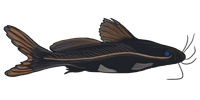On Monday I purchased 2 Corydoras Haraldschultzi fom my LFS. They both seemed fine and were even socializing with my other cories. The next morning one was on its side and the other was barely moving.I put them both in a specimen tank while i went to work. When i returned they were both dead with a redish color near their gills.
All my other fish were fine as well as my water perimeters. I took them back to to My LFS where the man who sold them to me said the whole shipment of Corys from Brazil including elegans were dying rapidly.They all had the redish color near their gills.I have never heard of this before , is anybody familar with this fatal disease in Corys.
Cory's imported from Brazil dying at LFS
-
PlecoCoryNY
- Posts: 1
- Joined: 18 Oct 2007, 20:57
- Location 1: Long Island, NY
- MatsP
- Posts: 21038
- Joined: 06 Oct 2004, 13:58
- My articles: 4
- My images: 28
- My cats species list: 117 (i:33, k:0)
- My aquaria list: 10 (i:8)
- My BLogs: 4 (i:0, p:164)
- Spotted: 187
- Location 1: North of Cambridge
- Location 2: England.
This does happen - it can be the prolonged exposure to ammonia during shipping for example. And although it may not have killed the fish immediately, it may have caused enough damage and illness that they "expire" quite quickly.
Another potential problem is sudden change from soft to hard water (or other way around).
--
Mats
Another potential problem is sudden change from soft to hard water (or other way around).
--
Mats
- Coryman
- Expert
- Posts: 2119
- Joined: 30 Dec 2002, 19:06
- My articles: 12
- My catfish: 5
- My cats species list: 83 (i:3, k:0)
- My BLogs: 1 (i:0, p:46)
- Spotted: 194
- Location 1: Kidderminster UK
- Location 2: Kidderminster, UK
- Interests: Cory's, Loricariids, photography and more Cory's
- Contact:






